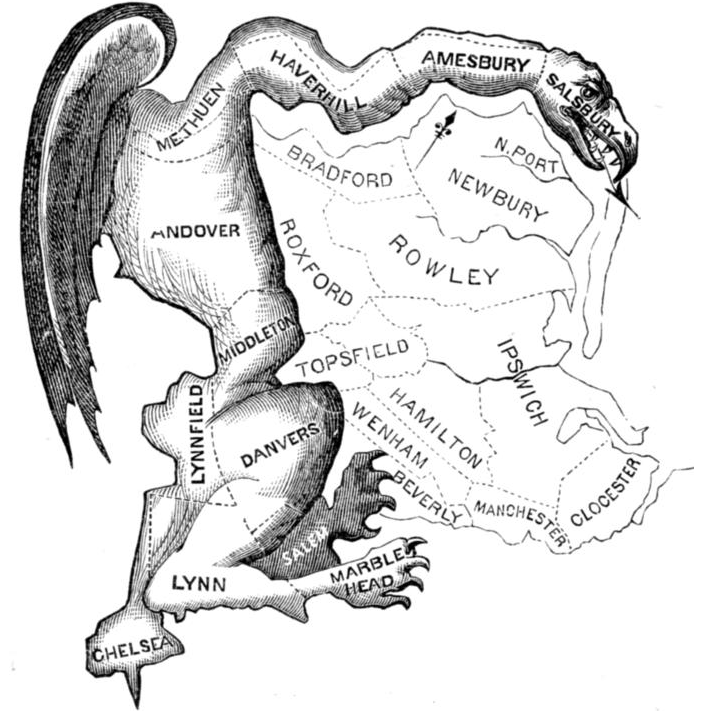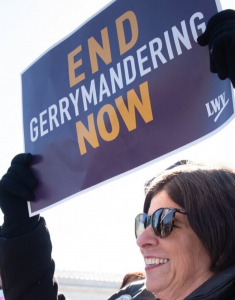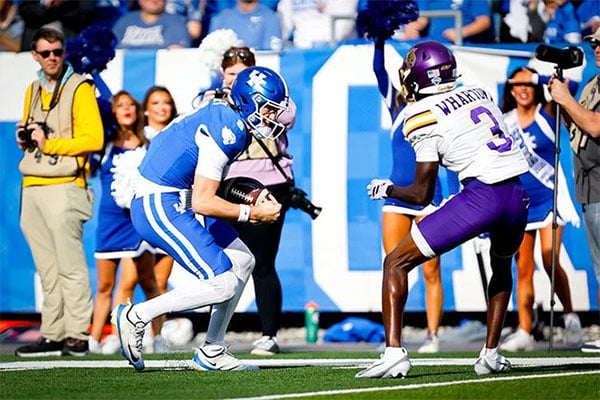By Christina Conover
Forward Kentucky
The Kentucky League of Women Voters is currently working to get the word out to citizens across the state about the League’s effort to assure the creation of fair maps in the upcoming redistricting process. As part of that effort, the League released example maps based on 2010 census data.
Redistricting is the process occurring every ten years to change legislative district boundaries following the federal census identification of population changes around the country. This redistricting process will begin in 2021 and likely be completed by late 2021 or early 2022.

The League’s current mission is to build fair districts by avoiding gerrymandering, the all-too-common act of “manipulating the boundaries of an electoral constituency so as to favor one party or class.”
In a press release this week, the League announced the release of the maps to provide a comparison of the official maps created by the General Assembly in 2012/2013 to the League’s “fairer” versions. Fran Wagner, president of the Kentucky League explained, “We’re doing this now to show our fellow Kentuckians what simpler, fairer maps can look like and to encourage broad citizen involvement in next year’s redistricting work.”
Copies of the maps as created by the General Assembly after the last census, and the new maps showing what they could have been, were sent to all Kentucky legislators.
Example of current versus more-fair maps
To demonstrate the difference, here are the current and “fairer” maps of Kentucky’s six congressional districts. Note that the districts in the League’s map are more cohesive, and that counties are not divided, which makes representation function more effectively.

Here are links with more information, including all the example maps:
• Redistricting info
• Congressional districts
• State Senate districts
• State House districts
What makes a redistricting map fair?
The fairness, or lack thereof, implemented in the process of redistricting can be either to the benefit or detriment of voters in a number of ways, including:
• the ease of learning about the candidates running to represent them,
• the ability to easily communicate with their representatives,
• promoting healthy competition between parties,
• the ability of racial minorities to elect their preferred candidates, and
• legislative consideration in addressing distinctive interests within regions around a state.
All citizens are affected by how the lines are drawn, and that is why it is important for the process to be transparent and for citizens to have input into the process.
In Kentucky, lines are drawn to determine six US Congressional seats, 38 Kentucky Senate seats, and 100 Kentucky House seats, as well as many city, county, and school board seats. Creating fair maps is rooted in the idea that voters should choose their legislators rather than legislators choosing their voters.

“Fair districts,” according to the League’s definition, means they are compact and competitive so as to lead to compromise, and they are drawn without preference to parties or the incumbent office holders.
Certain rules apply for drawing the lines, including that districts must be close in population. In Kentucky, for example, House and Senate seats must be within 5% of perfectly equal size in terms of population.
Redistricting must also provide “districts of opportunity” where minority voters have a chance to select representatives of their choosing. In Kentucky, counties must not be divided except where needed to create nearly equal districts. Once a county is divided, however, no rules exist about how many more times it can be divided.
The League’s maps were created in adherence to these rules. “We designed districts without considering how that might affect current legislators, aiming to meet the legal rules and avoid gerrymandered and confusing district lines,” Wagner said.
But what if the redistricting is NOT fair?
Both parties have been guilty of drawing gerrymandered maps, and the League’s contention is that the process must be open and fair. The political arena of voting “should be a marketplace of ideas” according to the League. Furthermore, fair maps promote compromise as opposed to polarization and gridlock that oftentimes occur in “safe” or uncompetitive districts. Also, as was the case when lines were poorly drawn following the last census, gerrymandered maps can lead to costly lawsuits.
In the June 27, 2019 case, Rucho vs. Common Cause, the Supreme Court decided that federal courts would not tackle the partisan redistricting issue. “We conclude that partisan gerrymandering claims present political questions beyond the reach of federal courts. Federal judges have no license to reallocate political power between the two major political parties, with no plausible grant of authority in the Constitution and no legal standards to limit and direct their decisions.” State courts, however, can act.

What we can do in Kentucky?
Currently, fifteen states have an independent commission who draws their district maps. Although the national League supports the appointment of independent commissions, Kentucky would need a Constitutional amendment for the appointment of one. Getting the issue on the ballot, according to the Kentucky League, would be hard. Getting the issue passed would be even more difficult. Therefore, the Kentucky League has proposed the creation of an advisory commission for public input.
The League is urging Kentucky citizens to download the maps and contact the League with comments or ideas for drawing better maps once the 2020 Census data is released. They also urge voters to contact their legislators to encourage them to create an advisory commission. Ask your legislators to seek citizen opinions through hearings and chances to comment by letter, email, and other modes of communication. Insist upon transparency, asking them to share the final maps before voting upon them. Prompt them to seek broad support for the district maps and substantially more than a simple majority vote.
Bear in mind that this time around, we will have to live with the lines that are drawn until at least 2032.
To contact your legislators regarding the League’s fight for fair maps, you can go to legislature.ky.gov or to the “Find Your Legislator” link, where you can use a map or your address to identify your representatives. Both your state representative and senator will pop up with further contact links.
Christina Conover is a retired teacher and lifelong Ohioan until two years ago when she and her husband Dale moved across the Ohio River from the east side of Cincinnati to Northern Kentucky. This report first appeared at Forward Kentucky.






















Sad to say that’s how the criminal system works as well . If they don’t like you they won’t help you only hold you accountable for the lack of resources and education to be a community law abiding citizen. While reading this I can’t get my brother who never got a childhood- loss of father, abuse, man of the house then into the system where he has completed evidence based programs went in 11/22/13 next parole date is 2 yrs away. Decriminalize isn’t for all. The effects thus has had on his children , our family shows complete bias. He’s no saint yet, has done all he can to make parole and for the 4th time deferred. I see this as similar since we lost our sister w no accountability. Etc. Yet, held accountable while watching the hypocrisy. He will be out and in a community at 51 y.o had COV-ID. Please pray for this biased world. I will for sure call it’s time to have integrity.
My open post to all Kentucky congress men and women.
What if we choose not to do the things we are supposed to do? The principal gain is a sense of an authentic act – and an authentic life. It may be a short one, but it is an authentic one, and that’s a lot better than those short lives full of boredom. The principal loss is security. Another is respect from the community. But you gain the respect of another community, the one that is worth having the respect of.